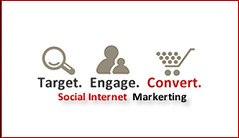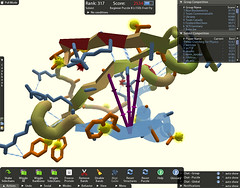Final blog!... Yay!!
Over the last 6 or so blogs I have looked at different
aspects of Enterprise
There are two major problems that I see with using this
formula for Enterprise
2.0 tools:
A lot of the benefits are qualitative in nature and are intangibles.
How can you measure ROI by connecting with customers on
Facebook, Twitter etc.? I have seen a few clumsy attempts to correlate these
connections with customer retention and sales but unless the people that are
being connected with explicitly say I was going to leave company X but because
that last Tweet they made was pure unadulterated Twitter nirvana I will stay.
 |
| Kogi BBQ food van |
Cascading effect.
Hinchcliffe (2009, para. 8) proposes that many of the Enterprise
2.0 technologies have a cascading effect due to the complexities and
intangibles that these technologies bring. In classical investment terms ROI
was calculated on technology that could be quantified (assembly lines and
industrial automation) as their effect was direct and measurable (Hinchcliffe, 2009, para. 8).
 |
| Lego Assembly Line |
When business invested in a new tool the ROI was delivered
more or less straight away and there was a direct monetary correlation between
investment and the return. With Enterprise 2.0
tools this line of thinking is flawed as there is a cascading effect or as
Hinchcliffe (2009, para. 8) says a cause and effect chain from implementing new tools to
actually seeing the return.
 TransUnion is a credit report company that has managed to
quantify part of their
TransUnion is a credit report company that has managed to
quantify part of their
While the ROI does look impressive there are two factors
that I would like to highlight:
- The reason why they can quantify Socialtext’s impact is that the savings that TransUnion has made is on tangibles, IT equipment has a price tag!
- The cascade effect; Originally employees at TransUnion had asked permission to set-up an employee Facebook group, due to the sensitive nature of TransUnion’s business it was decided to implement an internal social networking solution behind the company’s firewall for greater information protection (Murphy, 2009, para. 3).
TransUnion implements Socialtext – How do you calculate a
ROI on that?
Cascade: Socialtext is used for solving problems in a
collaborative environment – ROI calculated based on savings made from not
purchasing IT resources, basic but works to an extent. While there I a dollar
figure attached to IT equipment it fails to take into account a ROI on having a
collaborative environment for other aspects not just problem solving, the
intangibles.
Cascade: Within Socialtext there are tools that collate the
best answers and make them part of an internal database of answers – ROI on
collective intelligence.
Cascade: The tools that allow for this database also monitor
who is good at problem solving etc. So TransUnion is looking to create new job
descriptions based on this information e.g. Jim Jones Logistics Problem Solver.
– ROI on complex problems.
Cascade: This could also lead to employees being moved to a
department better suited to what they are good at. – ROI on employee retention.
Ultimately the real ROI is unknown and may even be way
higher than the 50x that has been quoted. This is the problem with calculating
ROI on enterprise 2.0 technologies; the actual return may not be apparent for
several cascades and may not even match up with the initial intentions. Enterprise 2.0 technologies can also throw up intangibles
that are hard to quantify and figures that are thrown around in case studies
are at best educated guesses with a myriad of assumptions, and we all know
about assumptions!
References:
Los Angeles Times - Kogi Korean BBQ, a taco truck brought to you by Twitter.
Zdnet - Determining the ROI of Enterprise 2.0
Internetevolution.com - Transunion Finds Cost Savings, Seeks More
Zdnet - Determining the ROI of Enterprise 2.0
Internetevolution.com - Transunion Finds Cost Savings, Seeks More



























